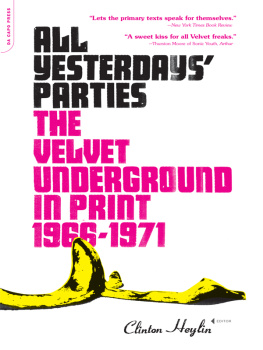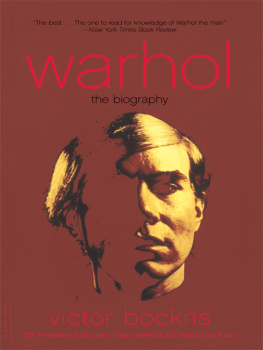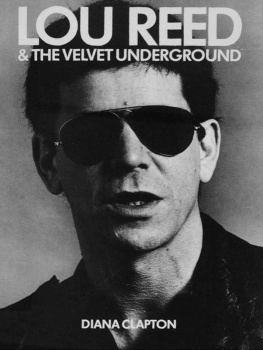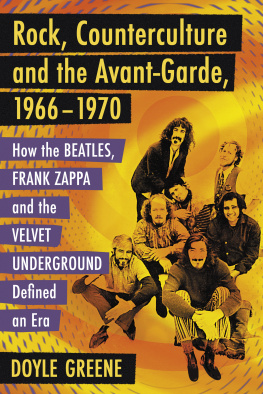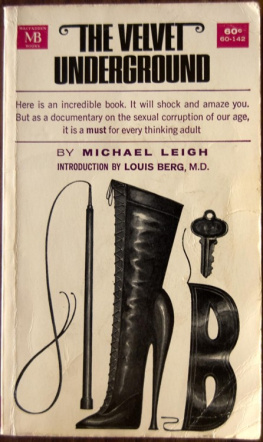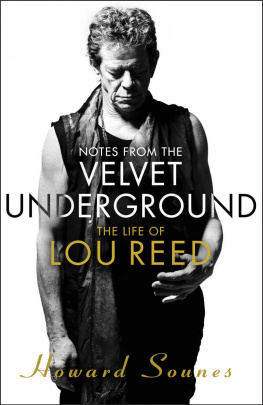ALL YESTERDAYS PARTIES
Also by CLINTON HEYLIN
Despite the System:
Orson Welles Versus the Hollywood Studios
Can You Feel the Silence?:
Van Morrison, a New Biography
Bootleg! The Rise and Fall of the
Secret Recording Industry (2nd Edition)
Bob Dylan:
Behind the Shades Revisited (2nd Edition)
No More Sad Refrains:
The Life and Times of Sandy Denny
Dylans Dmon Lover:
The Tangled Tale of a 450-Year-Old Pop Ballad
Never Mind the Bollocks, Heres the Sex Pistols
Bob Dylan:
The Recording Sessions, 19601994
Bob Dylan:
A Life in Stolen Moments: Day by Day, 19411995
From the Velvets to the Voidoids:
A Pre-Punk History for a Post-Punk World
The Da Capo Book of Rock & Roll Writing (editor)
ALL
YESTERDAYS
PARTIES
The Velvet Underground in Print: 19661971
Edited by
CLINTON HEYLIN

A list of credits/permissions for all pieces can be found on page 263.
Every effort has been made to contact or trace all copyright holders. The publishers will be glad to make good any errors or omissions brought to our attention in future editions.
Copyright 2005 by Clinton Heylin
All rights reserved. No part of this publication may be reproduced, stored in a retrieval system, or transmitted, in any form or by any means, electronic, mechanical, photocopying, recording, or otherwise, without the prior written permission of the publisher. Printed in the United States of America.
Designed by Trish Wilkinson
Set in 11.5-point Goudy by the Perseus Books Group
The Library of Congress has cataloged the hardcover edition as follows:
All yesterdays parties : the Velvet Underground in print : 1966-1971 / edited by Clinton Heylin. 1st Da Capo press ed.
p. cm.
Includes bibliographical references (p. ), discography (p. ), and index.
ISBN 0-306-81365-3 (hardcover : alk. paper) 1. Velvet Underground (Musical group) 2. Rock groupsUnited States. 3. Rock musicUnited StatesHistory and criticism. I. Heylin, Clinton.
ML421.V44A45 2005
782.42166'092'2dc22
2005002459
First Da Capo Press paperback edition 2006
ISBN-13: 978-0-306-81477-8 (pbk.)
ISBN-10: 0-306-81477-3 (pbk.)
eBook ISBN: 9780786736898
Published by Da Capo Press
A Member of the Perseus Books Group
http://www.dacapopress.com
Da Capo Press books are available at special discounts for bulk purchases in the United States by corporations, institutions, and other organizations. For more information, please contact the Special Markets Department at the Perseus Books Group, 11 Cambridge Center, Cambridge, MA 02142, or call (800) 255-1514 or (617) 252-5298, or e-mail .
1 2 3 4 5 6 7 8 909 08 07 06
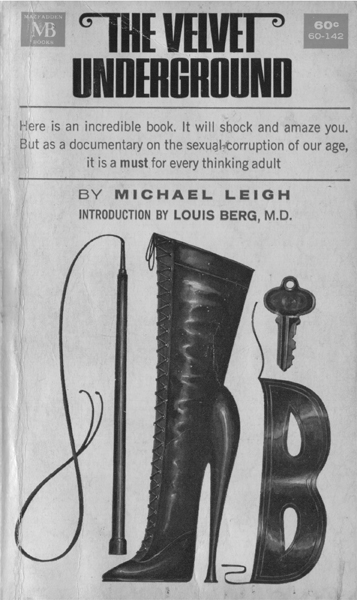
ACKNOWLEDGMENTS
T HANKS TO OLIVIER LANDEMAIN,DAVE KNIGHT, SCOTT CURRAN, AND ANDREW Sclanders for the loan or locating of rare originals. Without them, no book.
And thanks to Da Capo captain of industry, Ben Schafer, for making it happen.
MARCH OF THE WOODEN SOLDIERS
The Velvets and Their Underground Reputation
The Velvets were the first important rock & roll artists who had no real chance of attracting a mass audience. [If ] this was paradoxical,... the very idea of rock & roll art rests on a contradiction. Its greatest exponentsthe Beatles, the Stones, and (especially) the Whoundercut the contradiction by making the surface of the music deceptively casual, then demolished it by reaching millions of kids. But the Velvets music was too overtly intellectual, stylized, and distanced to be commercial. Like pop art, which was very much a part of the Velvets world, it was anti-art art made by anti-elite elitists.
ELLEN WILLIS, 1978
W HEN LOU REED, JOHN CALE, AND STERLING MORRISON MADE THEIR FIRST recordings as the Velvet Undergroundduring July 1965, in the lofty crash-pad of Cale and Reed on Ludlow Street, at the eastern extremity of Manhattans Lower East Sidethey hardly envisioned inhabiting the same realm as their heroes, those exponents of rock & roll art Willis cites above. From the start, the band existed on that radical borderline still separating pop from serious music (Dylan being days away from dissolving the old order of pop and folk at some tin-poke folk-fest on Rhode Island).
The songs they recorded over the noise of the New York streets that summer afternoonwhich now fill the first disc of the Velvets very own five-CD anthology, Peel Slowly and See (1995)were not merely too overtly intellectual, stylized, and distanced to be commercial, but their subject matter stood a million miles away from the world of radio play. Sex, drugs, politics, and death collide on Heroin, Prominent Men, and Venus in Furs (as well as on another, seemingly lost reel where Black Angels Death Song apparently resides, alongside something called Never Get Emotionally Involved with Man, Woman, Beast, or Child).
There was nothing pop about these prototypical recordings, made barely a month after the ramparts were first raised by Dylans electric marauders on the worlds first six-minute pop 45, Like a Rolling Stone. That Reed was still hiding under Dylans umbrella is evidenced by Prominent Men, as well as by the lopsided folkiness of the trios time signatures. But Reed was already dealing with subject matter at which even an amphetaminized Dylan balked.
Reed had previously been punching the clock (and the wall!) in the Long Island equivalent of the Brill Building, pounding out hit replicants for the Pickwick label under a variety of necessary disguises. But his final Pickwick recording, The Ostrichleading as it did to that serendipitous rendezvous with Calewas a Spitting Image send-up of this whole sorry factory of pop songsmiths. It was time to get serious.
At the same time, John Cale was looking to embrace a little frivolity. His adoption into one of the more idiot-savant credos among New Yorks avant-gardeas ongoing member of the Theater of Eternal Music aka Dream Syndicate, an experimental outfit that centered on La Monte Youngcertainly made for some challenging evenings bewildering Noo Yawks arty-sans, even if the warm drones emitting from Young & Co. lent more toward the eternal than the musical.
Upon meeting Lou Reed and hearing him play the likes of Heroin and Waiting for the Manon an acoustic guitar as if they were folksongsCale admits that he was terrifically excited by the possibility of combining what I had been doing with La Monte with what I was doing with Lou, and finding a commercial outlet (my italics). Here comes that dichotomy rearing up again. (And lest we forget, Cale continued his sonic experiments for his own amusement, recording a series of short instrumental pieces like Loop and Noiseissued in the Velvets name as part of multimedia packagesas well as more ambitious pieces like the forty-two-minute Sun Blindness Music, issued in 2000 as the title piece on the first of three archival CDs of Cales Velvet-era home recordings.)
The kind of contradictions highlighted by Willis were present from day one, inherent in their whole aesthetic. It would center on an in-your-face sonic confrontation, celebrated in the (essentially negative) press quotes proudly emblazoned across the inner sleeve on their debut album. If, at the time, they hoped it might yet prove a selling point, evidence was mounting against them. As soon as they stopped playing to the smart-art crowd and began infiltrating a more pop caucus, they were trying to cry halt on the whole midsixties pop gestaltwith predictable results. Witness Rob Norriss 1979 recollection, in

